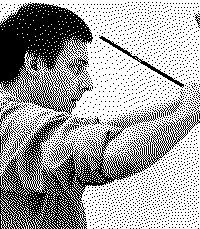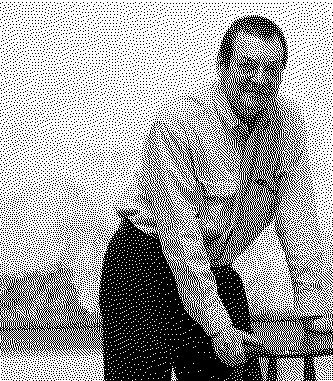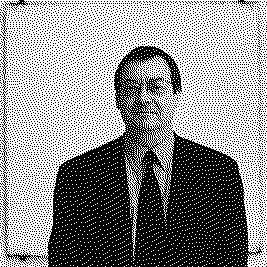Artists/Robert Ryman
Fast Facts
Focus on White Paint
Ryman's work is notable for its focus on the color white. He explored the nuances of white paint, using different shades and textures to create subtle variations in his works.
Minimalism
His style is often associated with Minimalism, a movement characterized by simplicity and a focus on the fundamental features of the medium.
Variety of Materials
Despite his focus on white, Ryman experimented with a wide range of materials, including metal, fiberglass, and cotton, as well as different types of paint and application methods.
Abstract Expressionism Influence
Although his work is minimalist, it was influenced by Abstract Expressionism, particularly in his emphasis on the physical act of painting and the texture of his works.
Emphasis on Surface and Texture
Ryman's paintings often emphasize surface and texture. He frequently left brushstrokes visible and sometimes incorporated the wall or support into the artwork itself.
No Imagery or Narrative
His works are devoid of imagery or narrative, focusing instead on the process of painting and the materials used.
Biography



Robert Ryman (1930–2019) was an American artist renowned for his unique approach to painting, characterized by his use of white paint in various permutations and on diverse supports such as paper, canvas, linen, aluminum, vinyl, and newsprint.
His works are deeply engaged in exploring the visual, material, and experiential qualities of his chosen media, fostering a profound dialogue with their immediate surroundings (David Zwirner).
Born in Nashville, Tennessee, Ryman's journey into the art world was not straightforward. Initially, he aspired to be a professional jazz saxophonist. After serving in the U.S. Army, he moved to New York in 1953 with ambitions to pursue a career in music. However, his path changed after he took a job as a security guard at the Museum of Modern Art (MoMA), where he was exposed to the works of modern masters and began experimenting with painting (The Art Story).
Ryman's artistic career is noted for its focus on monochrome painting, minimalism, and conceptual art, particularly his abstract, white-on-white paintings. Despite the minimalistic approach, his works are rich in texture and detail, inviting viewers to engage closely and observe the subtleties of his technique and the materials used (Wikipedia).
His first solo exhibition took place in 1967, and over the years, his work gained recognition and was featured in major shows, including the Venice Biennale and the Whitney Biennial. In 1974, he had his first museum retrospective organized by the Stedelijk Museum in Amsterdam (Wikipedia). Ryman also experimented with printmaking, creating etchings, aquatints, lithographs, silkscreens, and relief prints, applying the same rigorous exploration of materials and textures evident in his paintings (Wikipedia).
Throughout his career, Ryman challenged conventional notions of painting and art presentation. He experimented with how his works were installed, using metal brackets or directly affixing them to the wall, thereby questioning the gallery space and the viewer's experience of art (Wikipedia) (The Art Story). This innovative approach extended to his exhibitions and collections, where he often took an active role in the installation to ensure that his vision for the presentation of his work was realized (Wikipedia).
Ryman's contributions to art were recognized with numerous honors, including a Guggenheim Fellowship and the Praemium Imperiale. His works are held in significant public and private collections worldwide, reflecting his lasting impact on contemporary art (Wikipedia). His exploration of white and the nuances of texture, form, and shadow, all while operating within a seemingly limited chromatic scale, marks him as a pivotal figure in post-war American art.
Importance
Robert Ryman's significance in the realm of contemporary art is multifaceted and profound, owing to his unique approach to painting and his exploration of the medium's fundamental elements.
Exploration of White
Ryman's work is predominantly characterized by the use of white paint, exploring its myriad shades, textures, and effects on various surfaces. This focused exploration allowed Ryman to delve deep into the nuances of color (or the absence of it) and its interaction with light and space, pushing the boundaries of what is traditionally considered painting (The Art Story) (Phaidon).
Redefinition of Painting
By stripping back the colorful splatters of Abstract Expressionism and focusing almost solely on how paint adheres to the canvas, Ryman redefined painting. His work compels viewers to adjust their perception and engage with the artwork on a more profound, elemental level. Ryman’s paintings, often white and square, appear simple yet embody complex principles, such as the physicality of the paint and its application, which he meticulously explored throughout his career (Phaidon).
Influence on Minimalism
Although Ryman is often associated with minimalism, his work transcends this categorization, embodying both the minimalist ethos and a deep, idiosyncratic exploration of painting. Ryman’s oeuvre demonstrates that he was not merely a reductionist but a restless experimenter. His work maintains a dialogue with minimalism while asserting its distinctiveness through its focus on materiality, technique, and the interaction between the artwork and its environment (The Art Story) (Phaidon).
Innovative Installation Techniques
Ryman’s approach to the presentation of his work was innovative. He challenged traditional exhibition practices by experimenting with how his works were mounted and viewed. This not only questioned the nature of galleries and museums but also the relationship between artwork and viewer, suggesting a reevaluation of how art occupies space (The Art Story).
Legacy and Influence
Ryman's extensive career and consistent exploration of painting's essence have made him a figure of seminal importance in the history of 20th-century art. His influence extends beyond the visual impact of his work; it lies also in his methodological approach to painting, his questioning of artistic conventions, and his ability to inspire generations of artists to consider the material and conceptual possibilities of their medium (Artnet).
Technique
Robert Ryman's technique in painting is distinguished by its methodical experimentation with materials, structure, and the fundamental act of painting itself. His approach is characterized by several key elements:
Limited Color Palette
Ryman's work is almost exclusively in shades of white, allowing him to explore the subtle nuances of color, light, and shadow. This focus on white also emphasizes the physicality of the paint and the canvas' texture (The Art Story).
Varied Materials and Supports
Ryman utilized a wide range of materials for his paintings, including traditional canvas, linen, metal, vinyl, and fiberglass. This experimentation with different surfaces played a crucial role in his exploration of painting's essence and its interaction with space (The Art Story) (The Metropolitan Museum of Art).
Innovative Mounting Techniques
He often mounted his works in unconventional ways, such as using metal brackets, bolts, or even stapling directly to the wall. These methods were not merely for aesthetic effect but also questioned and expanded the conceptual boundaries of painting and its presentation in a gallery setting (The Art Story).
Focus on Process and Presence
Ryman’s paintings are deeply concerned with the act of painting itself—the gesture, the application of paint, and the decision-making process. He viewed painting as akin to typing, where the direct and intuitive interaction with the medium leads to the final work, rather than preconceived notions or emotional expressions (Phaidon).
Exploration of Spatial Dynamics
His works often blur the lines between painting and sculpture, engaging with the space around them and altering the viewer's perception of the gallery as merely a backdrop. This interaction with the environment is a critical component of his artistic inquiry (The Art Story).
Continuous Experimentation
Despite the seeming simplicity of his aesthetic, Ryman's work is the result of ceaseless experimentation with primer, medium, scale, material, support, and structure. His process-oriented approach allowed him to create an array of optical and compositional variations within his chosen constraints (The Metropolitan Museum of Art).






